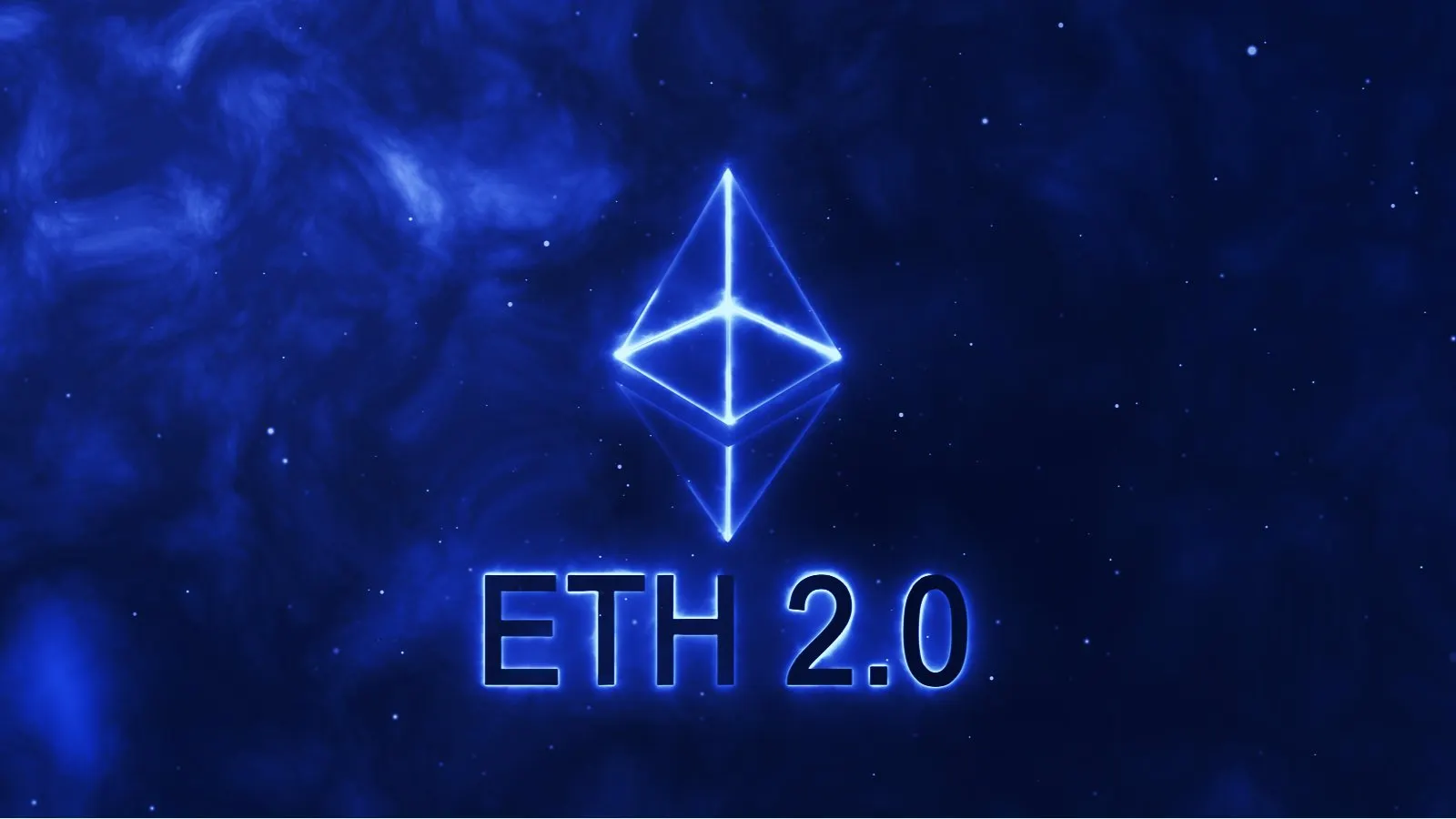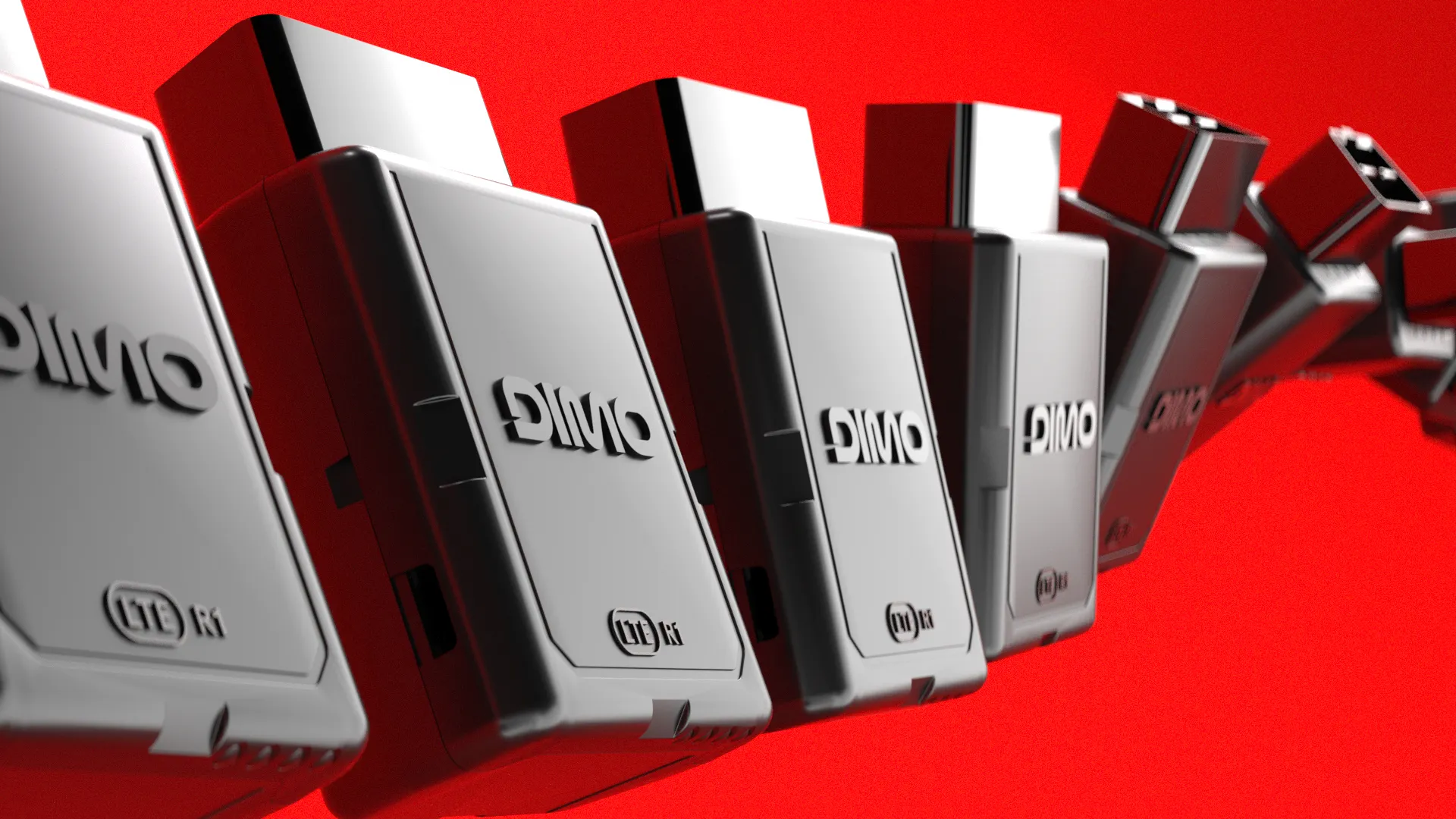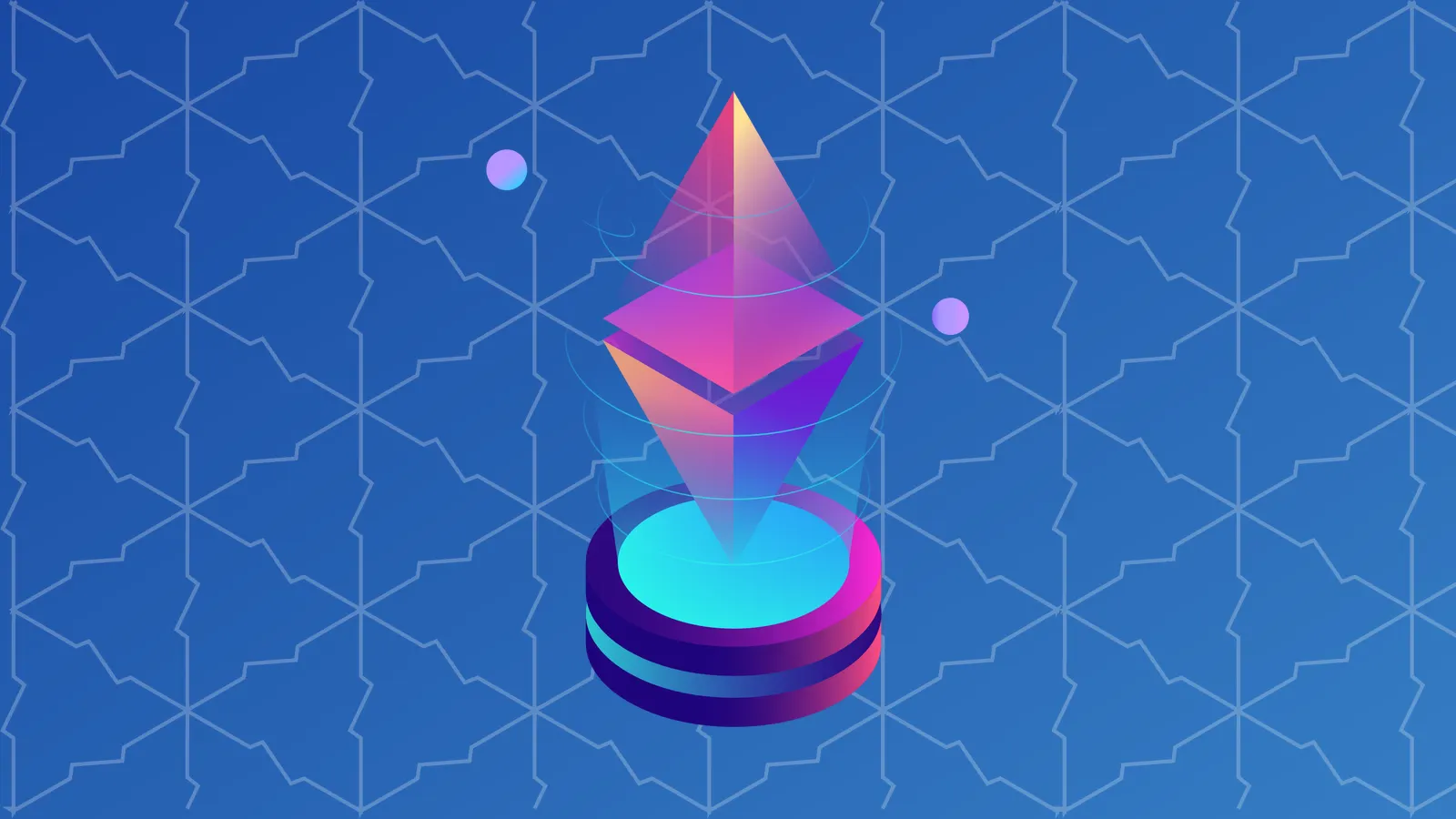In brief
By my (very conservative) calculations, Ethereum will see a greater than ~99.95% reduction in energy use post merge.
Dig into the details here: https://t.co/BOiilkZm5a
— carlbeek.eth (@CarlBeek) May 18, 2021

$117,877.00
-0.04%$3,775.45
-0.62%$3.14
-0.80%$811.79
-2.73%$181.44
-2.58%$0.999805
0.00%$3,772.49
-0.60%$0.223436
-3.66%$0.33683
4.04%$0.784908
-2.49%$117,767.00
-0.06%$4,555.52
-0.69%$43.87
-4.15%$3.85
-4.60%$0.420491
-0.88%$17.85
-3.01%$4,043.55
-0.33%$566.88
-2.86%$0.264582
-3.32%$4,040.58
-0.68%$24.49
-5.32%$3,775.61
-0.65%$109.46
-0.72%$8.96
-0.01%$3.31
0.28%$0.00001315
-3.48%$1.001
0.12%$0.999637
0.01%$0.999599
0.16%$117,809.00
-0.11%$44.05
0.08%$10.27
-2.88%$3.90
-3.88%$319.00
-1.12%$4.50
-2.84%$0.00001155
-5.63%$0.143389
1.98%$1.19
0.02%$284.28
-2.24%$391.76
-4.25%$0.572984
-15.20%$2.74
-3.01%$21.95
-0.69%$0.429915
-3.30%$0.963973
-4.23%$5.50
-2.82%$48.44
-0.60%$220.98
-2.75%$0.097116
-2.51%$0.757781
-5.14%$4.55
-3.78%$1.00
0.00%$0.03789191
-8.34%$0.00003022
-11.10%$3,773.57
-0.11%$0.261058
-2.96%$0.999122
-0.26%$0.427084
-3.99%$0.02498877
-0.71%$4.64
-2.50%$17.60
-2.57%$3.95
-4.72%$0.222565
-3.27%$4.58
-0.29%$1.074
-6.05%$2.09
-3.81%$9.46
-4.43%$0.324195
-1.17%$0.715195
-0.54%$192.14
-3.57%$0.084699
-8.41%$4,290.02
-0.53%$121.45
-1.99%$2.58
-3.41%$5.97
3.09%$0.02438746
0.32%$117,560.00
-0.15%$3,959.43
-0.47%$1.061
0.02%$5.05
-0.84%$0.541236
-5.14%$0.095979
5.35%$11.38
-0.79%$1.00
0.03%$3,970.52
-0.44%$14.27
-4.22%$4,040.15
-0.62%$4,081.94
-0.36%$0.999169
0.01%$1.88
-4.36%$0.985754
0.53%$1.001
0.26%$1.31
-0.31%$0.730285
-7.67%$3,972.76
-0.48%$0.77421
-3.59%$0.999703
-0.02%$0.999348
-0.00%$0.00011724
-5.23%$1.12
-14.27%$117,590.00
-0.35%$0.21325
15.59%$203.89
-2.87%$810.74
-2.63%$0.564872
-1.46%$3,759.96
-0.44%$0.102277
-3.09%$0.999654
0.21%$0.998905
-7.04%$2.86
-4.96%$0.305428
-5.52%$0.00273053
6.67%$28.72
-1.37%$0.361634
1.65%$1.059
-3.67%$117,750.00
-0.05%$3,333.36
0.43%$237.68
-2.82%$120,697.00
3.86%$0.15851
-3.71%$0.999955
0.08%$1.11
0.13%$1.39
-6.26%$0.854949
-1.21%$0.541906
-3.49%$0.855665
-3.20%$3,328.33
0.10%$3.05
-5.51%$3,771.99
-0.45%$4,033.80
-0.71%$0.202226
-2.56%$0.01640324
-2.40%$3,916.17
-2.14%$0.01689095
-3.39%$0.126438
-4.33%$0.295676
-2.55%$4.31
-1.64%$0.816661
-5.97%$111.97
0.02%$0.0000007
0.64%$1.087
-1.28%$1.91
-2.81%$0.998472
0.14%$117,684.00
-0.03%$3,778.98
-0.46%$40.44
-3.10%$0.392755
-2.27%$3.31
-4.86%$0.428831
-4.90%$0.00841823
-0.82%$4,017.91
-0.22%$0.997711
0.02%$0.302975
-2.16%$0.999831
0.04%$1.78
-0.37%$117,657.00
-0.13%$0.223263
-3.09%$0.474484
-7.11%$0.999534
-0.02%$3,776.58
-0.43%$117,598.00
0.14%$0.00000143
-6.76%$27.98
-2.86%$0.331965
-4.82%$0.01597677
0.35%$4,161.89
-0.36%$0.075966
0.90%$0.534006
-3.67%$0.05311
-7.67%$0.514021
8.51%$4,132.88
-0.46%$0.005436
-6.25%$7.61
0.84%$0.00851631
-0.85%$1.19
-1.99%$0.998793
0.21%$1.41
-2.14%$0.61412
0.14%$0.00000049
2.52%$1.18
15.89%$0.127668
-3.49%$6.48
-0.36%$1.16
0.02%$43.88
-3.24%$0.380286
-3.37%$0.596172
-4.10%$47.68
-4.34%$0.00516362
15.10%$3,762.73
-0.68%$15.50
-4.25%$3,774.86
-0.46%$0.00002184
-2.53%$0.93621
-11.39%$1.34
-1.32%$4,566.78
-0.67%$7.39
1.04%$0.02205943
8.03%$0.389731
-0.54%$0.16828
-5.93%$0.057397
-2.53%$14.04
0.05%$0.999795
-0.00%$1.095
-0.03%$5.13
-31.96%$1.002
-0.01%$2.42
-4.16%$0.04127028
-2.73%$0.99938
-0.33%$0.999867
0.01%$0.00771996
-4.44%$10.77
0.03%$0.082919
-1.93%$0.03896994
5.51%$0.851918
-1.75%$0.183673
-1.74%$0.03603517
6.01%$29.71
-5.72%$0.550121
-1.97%$117,844.00
-0.09%$24.44
-5.50%$198.91
-2.85%$0.271265
-1.26%$0.372851
-3.50%$0.00000089
0.78%$4.55
-14.98%$0.141963
-2.52%$43.76
-3.24%$22.35
-0.11%$0.542921
-3.18%$117,793.00
-0.03%$1.28
-3.79%$132.73
-6.77%$117,617.00
-0.06%$0.00006024
-2.07%$0.999698
0.02%$0.00482454
-2.70%$0.00331306
-2.87%$3,964.88
-0.38%$0.338089
-6.54%$0.791863
-3.71%$0.00000273
21.68%$0.716222
-2.62%$4,248.29
-0.69%$0.222181
-2.97%$0.00377554
-1.35%$1.002
0.66%$0.086201
-0.52%$1.28
-2.81%Reading

Ethereum’s upcoming ETH 2.0 upgrade could help reduce the blockchain’s energy consumption and will no longer devour “a country's worth of power,” according to Carl Beekhuizen, a researcher at the Ethereum Foundation.
“By my (very conservative) calculations, Ethereum will see a greater than ~99.95% reduction in energy use post-merge,” Beekhuizen wrote in a research report published yesterday.
By my (very conservative) calculations, Ethereum will see a greater than ~99.95% reduction in energy use post merge.
Dig into the details here: https://t.co/BOiilkZm5a
— carlbeek.eth (@CarlBeek) May 18, 2021
Taking the total number of validators, unique addresses, and the average energy consumed by hardware into account, the resulting figure was significantly lower than Ethereum’s current energy demands using the proof of work (PoW) consensus mechanism.

“In total, a Proof of StakeProof of Stake Ethereum, therefore, consumes something on the order of 2.62 megawatt. This is not on the scale of countries, provinces, or even cities, but that of a small town (around 2,100 American homes),” Beekhuizen wrote.
Currently, Ethereum’s blockchain uses the same energy-hungry proof of work (PoW) consensus mechanism employed by Bitcoin. This will change soon, however, thanks to Ethereum 2.0. The ambitious multi-year upgrade will switch the network to a greener consensus mechanism called proof of stake (PoS).
This is because proof of stake relies on users locking up—or staking—Ethereum to support the production of new blocks instead of using energy-intensive mining rigs.
The long-awaited Ethereum 2.0 upgrade is near. The multi-phased upgrade aims to improve the Ethereum network’s scalability and security through several changes to the network’s infrastructure—most notably, the switch from a proof-of-work (PoW) consensus mechanism to a proof-of-stake (PoS) model. What is Ethereum 2.0? Ethereum 2.0, also known as Eth2 or “Serenity,” is an upgrade to the Ethereum blockchain. The upgrade aims to enhance the speed, efficiency, and scalability of the Ethereum network...
In terms of energy required per transaction, ETH 2.0 uses the equivalent of “about 20 minutes of TV,” he added. By comparison, one transaction on PoW Ethereum requires the same amount of electricity that can be used to power a house for 2.8 days, while one Bitcoin transfer consumes “38 house-days worth.”
While ETH 2.0 is only in its preliminary stages, users have already locked up more than 4 million tokens in it.
The first testnets for the post-merge Ethereum—when the blockchain fully transitions to ETH 2.0—were launched in late April. A hard date for the full launch, however, has been notoriously hard to pin down.
Still, Beekhuizen concluded that “Ethereum’s power-hungry days are numbered, and I hope that’s true for the rest of the industry too.”
Editor's note: This story was updated after publication to clarify that there more than 4 million ETH tokens currently staked in ETH 2.0, not $4 million worth of ETH.

Crypto's best minds are heading east, and it's gaining at a pace that other regions are finding hard to catch up to. Asia was responsible for 32% of global crypto developer activity in 2024, according to a report from venture firm Electric Capital. The firm recently published its comprehensive annual report, analyzing over 900 million code commits across the crypto industry. The transformation represents a nearly threefold increase from Asia's 12% share in 2015, while North America's position de...

Google's announcement of its breakthrough Willow quantum processor has reignited debates about crypto security, with some observers suggesting quantum computers could break Bitcoin's encryption. The tech giant claims its new quantum computing chip can complete certain calculations in five minutes, which would take traditional supercomputers an impractical amount of time to process. Quantum computing is a new type of computing that uses the strange properties of quantum physics, where small part...

Dimo, a platform for developers to build apps and enable car drivers to monetize their data, is migrating between Ethereum scaling networks, the developers exclusively told Decrypt—from Polygon to Coinbase’s Base. Co-founder Rob Solomon believes the move opens doors for valuable partnerships ahead. The project is a “global API layer for cars” that is aiming to make every car on earth smart and programmable. This could manifest, the company says, in a future full of AI car mechanics and smart par...

